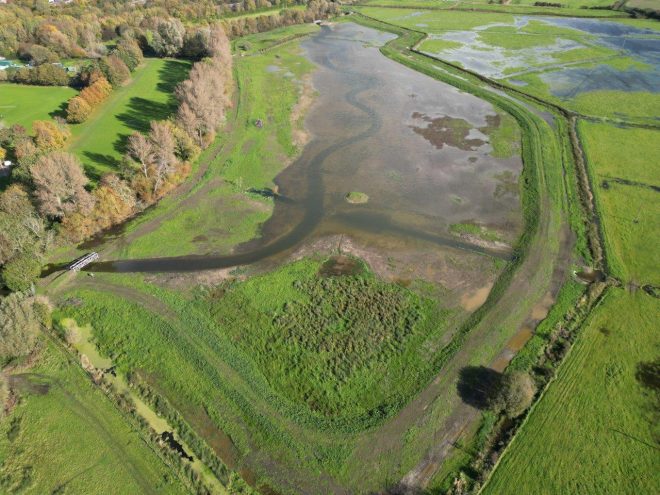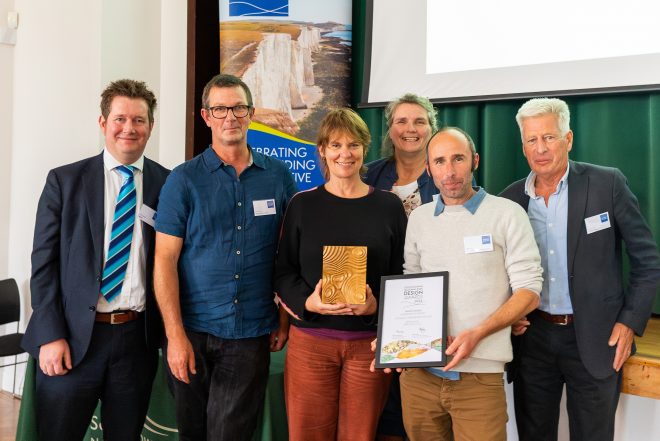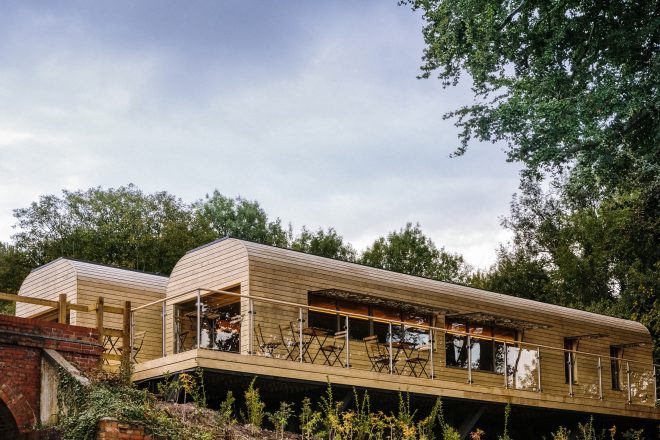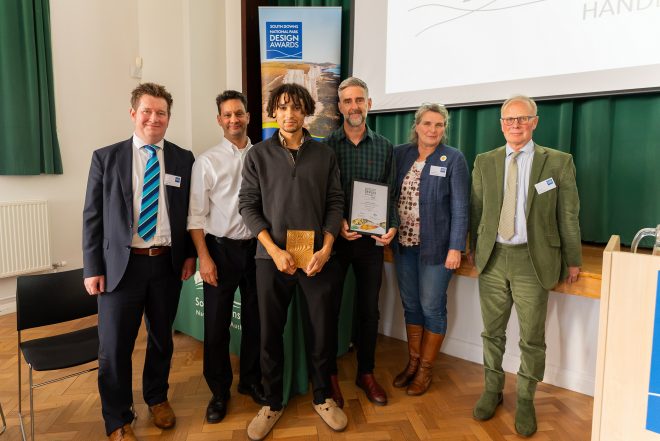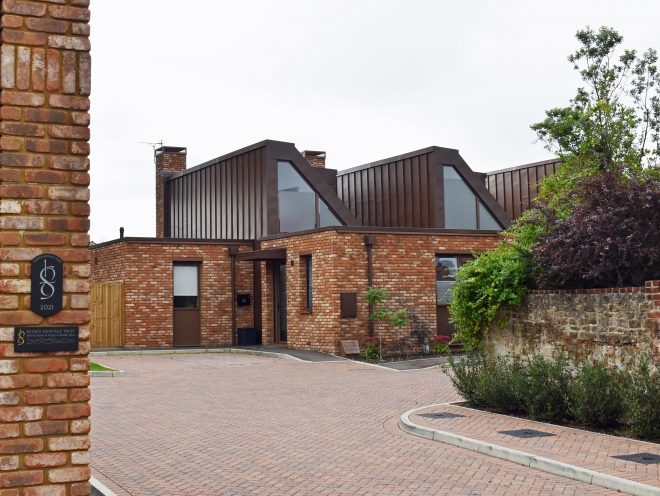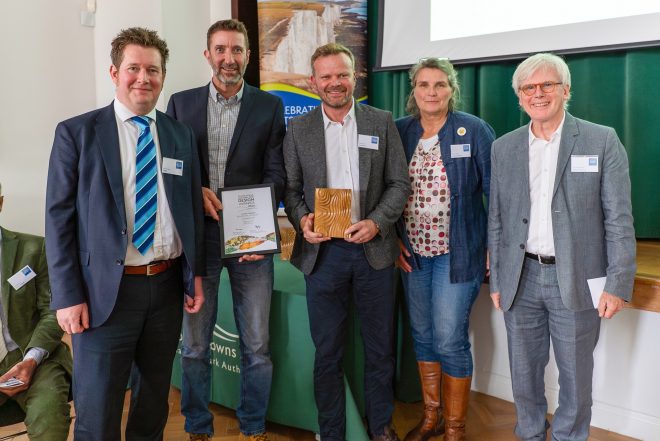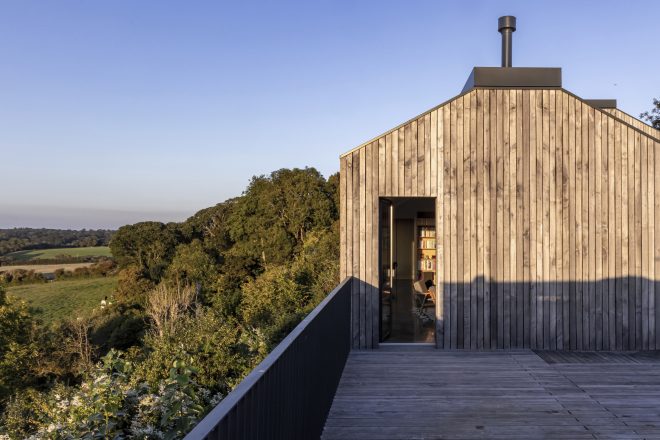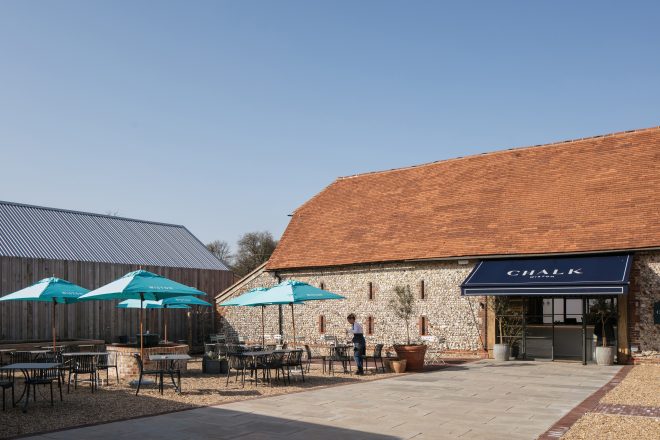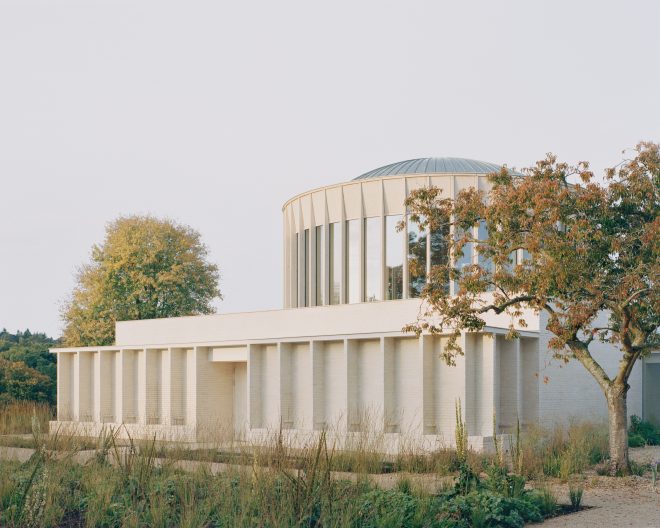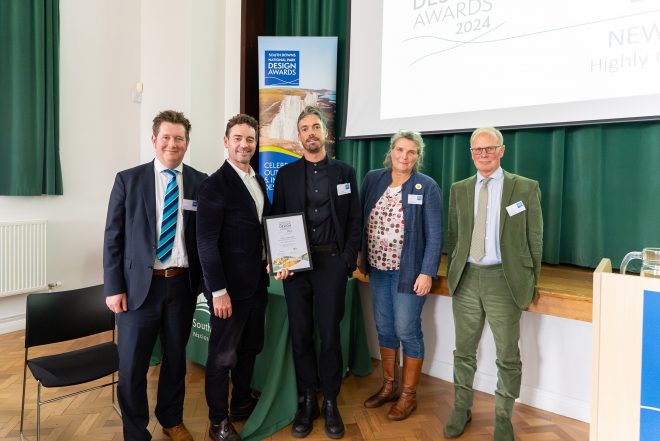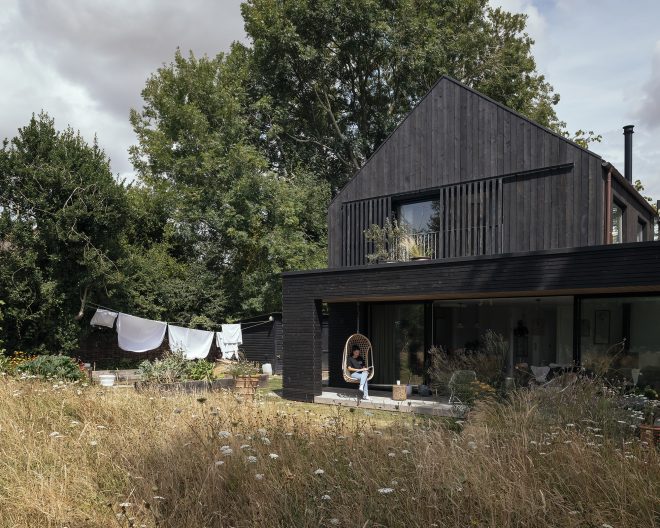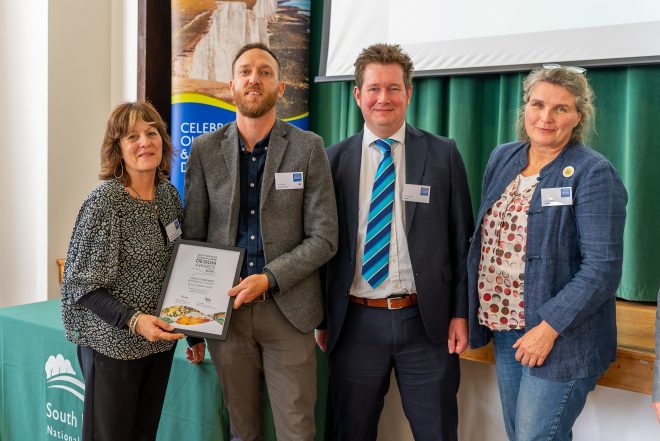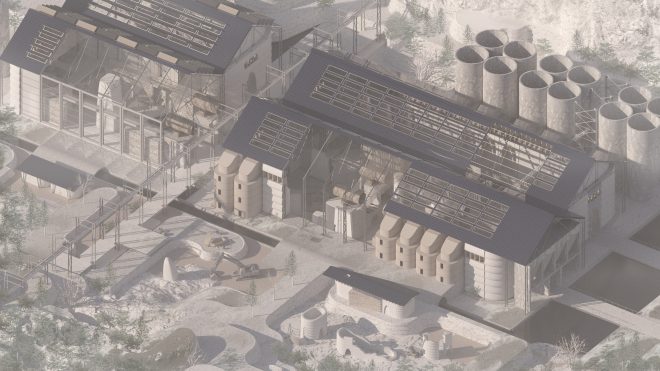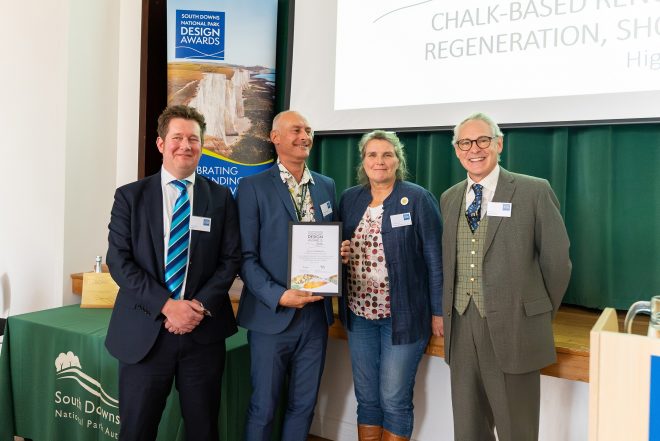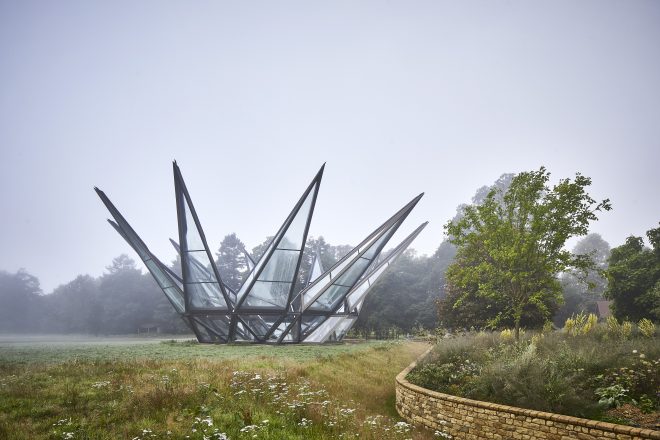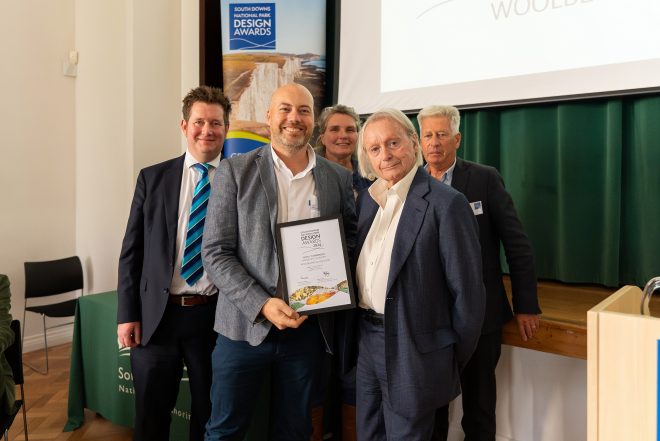Exceptional design shines brightly at South Downs National Park awards
October 3, 2024
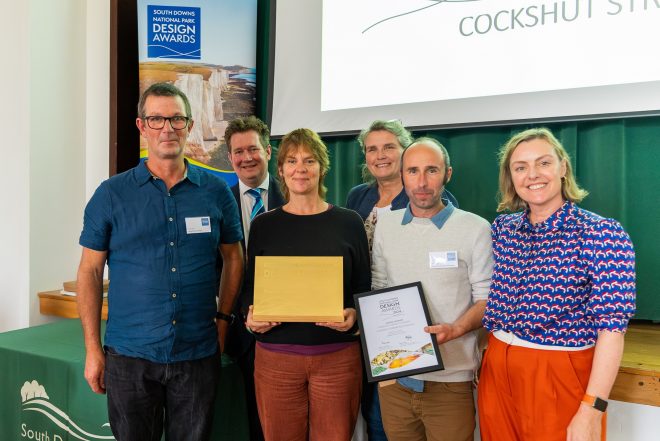
A stunning new wildlife haven, a hillside café in the shape of a train carriage, an eco-friendly house and a beautifully-renovated farmstead are among the winners of the South Downs Design Awards.
The winners were announced at an inspiring ceremony at the South Downs Centre in Midhurst yesterday (2 October).
The awards celebrate high standards of architectural and landscape design, as well as promote creativity and understanding of the National Park through design. More than 60 nominations were received earlier this year and 16 unique projects were shortlisted from across Sussex and Hampshire.
It was double delight for the team behind the restoration of the Cockshut Stream, in Lewes, which won the Landscape Category and also took the top spot in The People’s Choice, taking the lion’s share of the 1,500 votes in the public poll.
Six hectares of much-needed wetland for wildlife has been created following the realignment of the rare chalk stream. The area has quickly become an oasis for nature, with herons, kingfishers, egret and snipe among the many birds to be found, while toads, sticklebacks, eels and newts can be spotted in the ponds.
The partners on the project included the Ouse and Adur Rivers Trust, Lewes Railway Land Wildlife Trust, Lewes District Council, Veolia Environmental Trust and Chris Butler Archaeological Services.
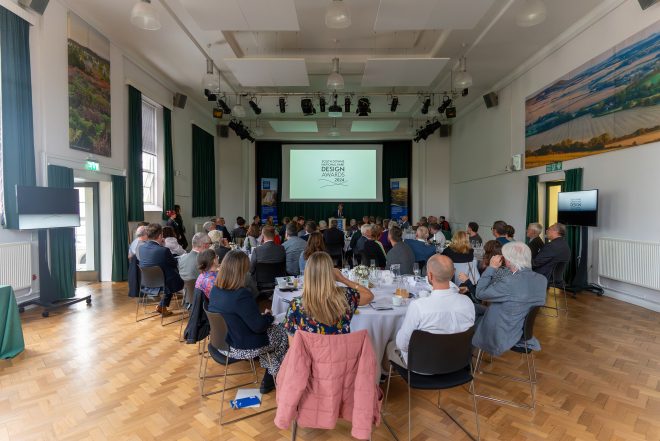
The judges said: “The project restores this canalised stretch of river back to something like its original, natural, sinuous shape with all the ecological and water management benefits this allows. This is truly an enhancement of both natural beauty and wildlife. The panel hopes this kind of project can be replicated at a larger scale both within the National Park and far beyond.”
Taking the trophy in the Non-residential Category was the Handlebar Café, which sits on the viaduct cycle and walking path below St Catherine’s Hill in Winchester. The timber-clad cycle café and bike workshop were the brainchild of a group of local teenagers, who devised the concept of trains passing on a bridge. The building includes a number of features that pay homage to the site’s history, including shutters that depict cogs and wheels.
Judges said: “The judges were very taken with the genesis of this project which originated from ideas and sketches by local teenagers with no formal design training. The result, on an awkward disused railway viaduct site, is an enhancement of the landscape, a celebration of the cultural heritage of this site and a fulfilment of both purposes and the duty of the National Park. When viewed from the middle distance, the playful evocation of two passing carriages is a delight.”
 There were joint winners in the Residential Category: Lannings Way, Midhurst and The Mile House, at Crossgates, Amberley. Lannings Ways comprises four energy-efficient homes that pay homage to the heritage of the site as a former ambulance station and the traditional setting of the site in the conservation area. The Mile House is an incredible living space, placed up to the edge of a slope to maximise views of the National Park. The house is fully Passivhaus-certified to produce a building with exceptional thermal performance and airtightness.
There were joint winners in the Residential Category: Lannings Way, Midhurst and The Mile House, at Crossgates, Amberley. Lannings Ways comprises four energy-efficient homes that pay homage to the heritage of the site as a former ambulance station and the traditional setting of the site in the conservation area. The Mile House is an incredible living space, placed up to the edge of a slope to maximise views of the National Park. The house is fully Passivhaus-certified to produce a building with exceptional thermal performance and airtightness.
Regarding Lannings Way, judges said: “We were impressed by both the developer’s ambition, care for detail and the bold design solutions implemented. It should serve as an inspiration for more creative house building design elsewhere in the National Park.”
Regarding The Mile House, they commented: “The Mile House has made the most of its elevated position above the Arun Valley, while its relatively modest stature, unfussy form and natural oak cladding and local stone has helped it integrate well into the landscape.”
Winning the Conservation Category was Wiston Estate Winery at Washington with a redeveloped historic farmstead that draws inspiration from the surrounding landscape. Two historic flint barns have been sensitively restored into a fine dining restaurant and private dining room, alongside new-build elements for wine production and a visitor shop.
Judges said: “We were very impressed with the repurposing of historic farm buildings and the sensitive juxtaposition of new buildings and the very high quality of detailing and workmanship. They were particularly pleased to see the quality of the natural timber sourced from the estate with numerous other recycled or retrieved materials used in the build and a general celebration of traditional materials. The result is an attractive new destination which enhances the landscape and promotes the enjoyment of it.”

All the winners received a specially designed trophy, beautifully hand-carved in South Downs oak by acclaimed West Sussex-based sculptor, Alison Crowther.
Helping to present the awards and special guest for the day was Carolin Göhler, President of The Landscape Institute.
The judges highly commended a number of projects:
Black Timber House, Rodmell – a house with very good sustainable credentials using horizontal and vertical timber cladding.
New Temple, Liss – a unique project using a bright material palette which creates ‘an aura of calm’.
Woolbeding Glasshouse – a stunning kinetic glasshouse, 15 metres high, at Woolbeding National Trust Gardens made up of 10 segments (sepals) designed to open and close in the manner of a flower.
Chalk-based Renovation, Remediation and Regeneration at Shoreham Cement Works – an innovative hypothetical student-based project looking at possible ways to redevelop the Shoreham site, including a construction school and production facility for chalk cobs as a natural building material.
 Tim Slaney, Chief Executive (Interim) of the National Park Authority, said: “The standard of entries has been exceptional and it’s been an incredibly difficult decision to pick the winners among such a strong field.
Tim Slaney, Chief Executive (Interim) of the National Park Authority, said: “The standard of entries has been exceptional and it’s been an incredibly difficult decision to pick the winners among such a strong field.
“Every project demonstrates just how high, rightly, the benchmark is for design in the South Downs National Park. They show the true skill and flair of architects, urban designers, landscape specialists, developers and planners to be able to respond to landscape, character, local identity and heritage, as well as find innovative solutions to the climate and nature emergencies.
“As one of the busiest planning authorities in the UK, it’s inspiring to see such creativity to help foster a built environment where people want to live, work and thrive and will continue doing so for generations to come.”
Vanessa Rowlands, who presented The People’s Choice award and is Chair of the Authority, said: “I would like to congratulate all the winners who deserve all the glory and praise today for some truly inspirational work.
“I’d also like to thank each and every person who took the time to nominate a project and vote for their favourite. Our towns, villages and local communities, full of buildings old and new, are an integral part of what makes this National Park so special and I’m pleased that good design continues to conserve and enhance this treasured landscape.”
Carolin Göhler, President of The Landscape Institute, said: “Carrying out development in any National Park is a privilege and the short-listed schemes have shown excellence in design, respecting and understanding their special location within the South Down National Park. From diverse buildings to nature restoration schemes, the winning projects demonstrate and help to raise awareness of good design and its impact in improving quality of local environments for people and nature.”
- The judging panel included members of the National Park’s Design Review Panel and each shortlisted site was visited.
- Here is the shortlist for the awards.
- The previous South Downs Design Awards took place in 2019.
The winners
Highly commended
Awards ceremony pictures taken by Sam Moore

